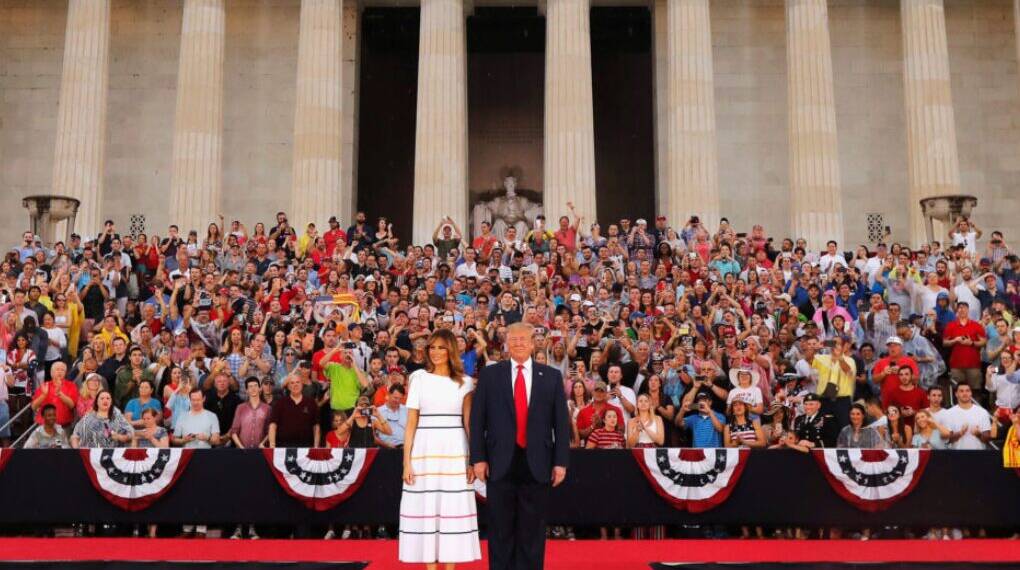The 2025 Fourth of July was not just another Independence Day in the United States—it marked the launch of President Donald Trump’s high-profile America250 campaign, a yearlong commemoration of America’s 250th anniversary in 2026.
This year’s celebration, blending spectacle, policy, and political messaging, offered a revealing look at Trump’s strategy as he heads into the final year of his second term.
The America250 Vision: A Yearlong Spectacle
The America250 Vision is a yearlong celebration launched by President Trump to mark the 250th anniversary of the United States’ founding. The initiative features a nationwide series of patriotic events, including a traveling Great American State Fair, the creation of a National Garden of American Heroes, the Patriot Games for high school athletes, student contests, and storytelling projects.
The campaign aims to foster national unity and pride, while also keeping Trump and his administration at the center of the country’s milestone celebrations leading up to July 4, 2026
The “Big, Beautiful Bill”
The Independence Day festivities doubled as a victory lap for Trump’s signature tax and spending bill, passed by Congress just days earlier. Trump’s legislative and political agenda, centered around the passage of his hallmark tax and spending package, popularly referred to as the “Big, Beautiful Bill.” Passed by Congress just days before July 4th, this sweeping legislation included major tax cuts for middle-class families, increased investments in infrastructure, and new incentives aimed at boosting American manufacturing and job creation.
By intentionally timing the bill’s signing to coincide with the White House’s annual Fourth of July picnic, Trump transformed what is traditionally a nonpartisan celebration into a dual commemoration of both national independence and his administration’s policy achievements. He described the bill as a “birthday present for America,” positioning it as a tangible gift to the nation and an emblem of his leadership.
The day’s events were further elevated by a dramatic flyover of stealth bombers and fighter jets, a spectacle that not only celebrated American military prowess but also subtly referenced recent U.S. military actions in Iran. This display underscored Trump’s ongoing effort to link his administration’s domestic victories with demonstrations of strength and resolve on the global stage.
The blending of legislative triumph with patriotic pageantry was carefully orchestrated to rally Trump’s supporters, reinforce his image as a results-driven leader, and place his policy agenda at the heart of the nation’s milestone celebrations. In essence, the July 4th event went beyond traditional festivities, serving as a comprehensive display of Trump’s vision for America’s future and his determination to keep his administration’s accomplishments in the national spotlight as the country approaches its 250th anniversary.
Also Read: The “Big Beautiful Bill” or Big Backlash?
UFC on the White House Lawn
Perhaps the most headline-grabbing announcement was Trump’s plan to host a UFC championship fight on the White House grounds as part of the America250 celebration. Trump, a longtime friend of UFC president Dana White, said the event could draw up to 25,000 spectators and would be “epic,” blending pop culture with presidential spectacle in a way no previous administration has attempted.
Political Context: Approval Ratings and Public Mood
While Trump’s July 4th plans were grand in scope, they come at a time of sliding approval ratings. A recent poll showed his approval down to 40%, with 56% of Americans disapproving of his policies—a 10-point swing in just three months. The America250 campaign, with its mix of nostalgia, spectacle, and policy, appears designed to reenergize Trump’s base and recapture public enthusiasm.
A Break from Tradition
Unlike previous presidents—who often marked July 4th with more subdued White House receptions or local festivities—Trump’s approach is unapologetically large-scale and media-driven. His absence from a public event on July 4 itself (opting instead for a major rally in Iowa the day before) also marks a departure from tradition, signaling a shift toward campaign-style events and away from bipartisan national rituals.
Trump’s July 4th celebration was more than a birthday party for America—it was a carefully choreographed display of political theater, designed to blend patriotism, entertainment, and policy achievement. By launching the America250 campaign with such fanfare, Trump has set the stage for a year of high-visibility events that will keep him—and his vision of American greatness—at the center of the national conversation as the country approaches its 250th anniversary.








